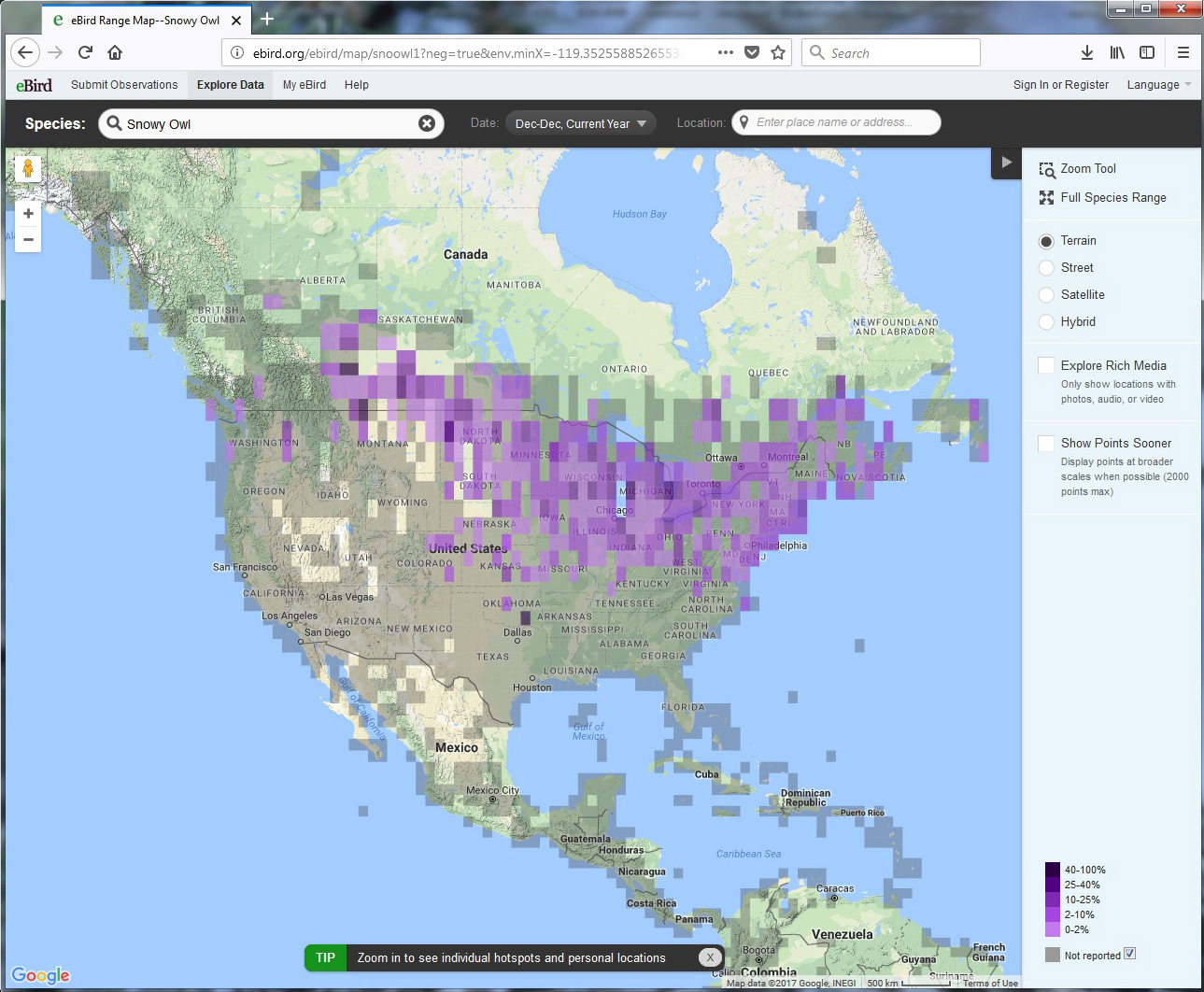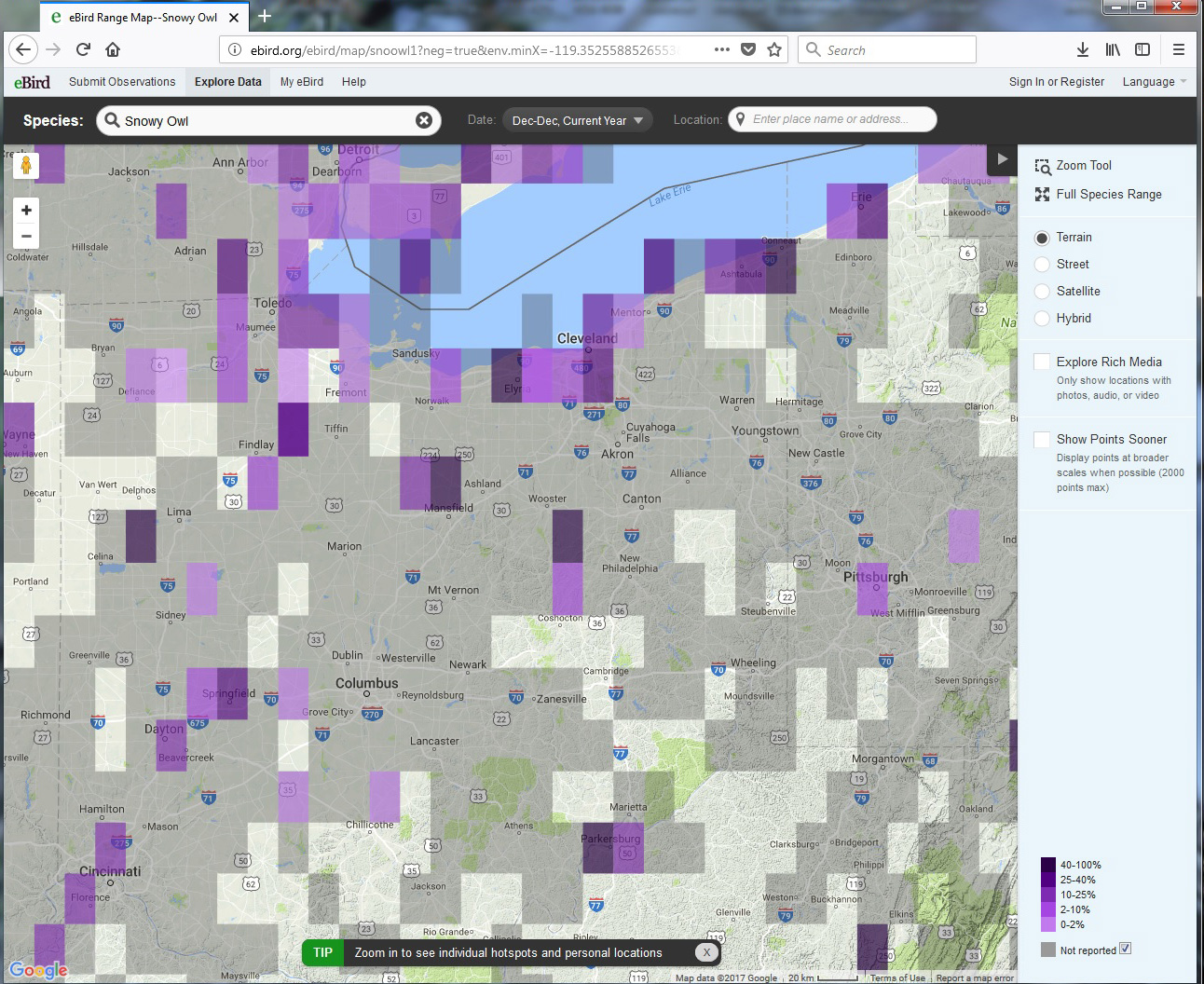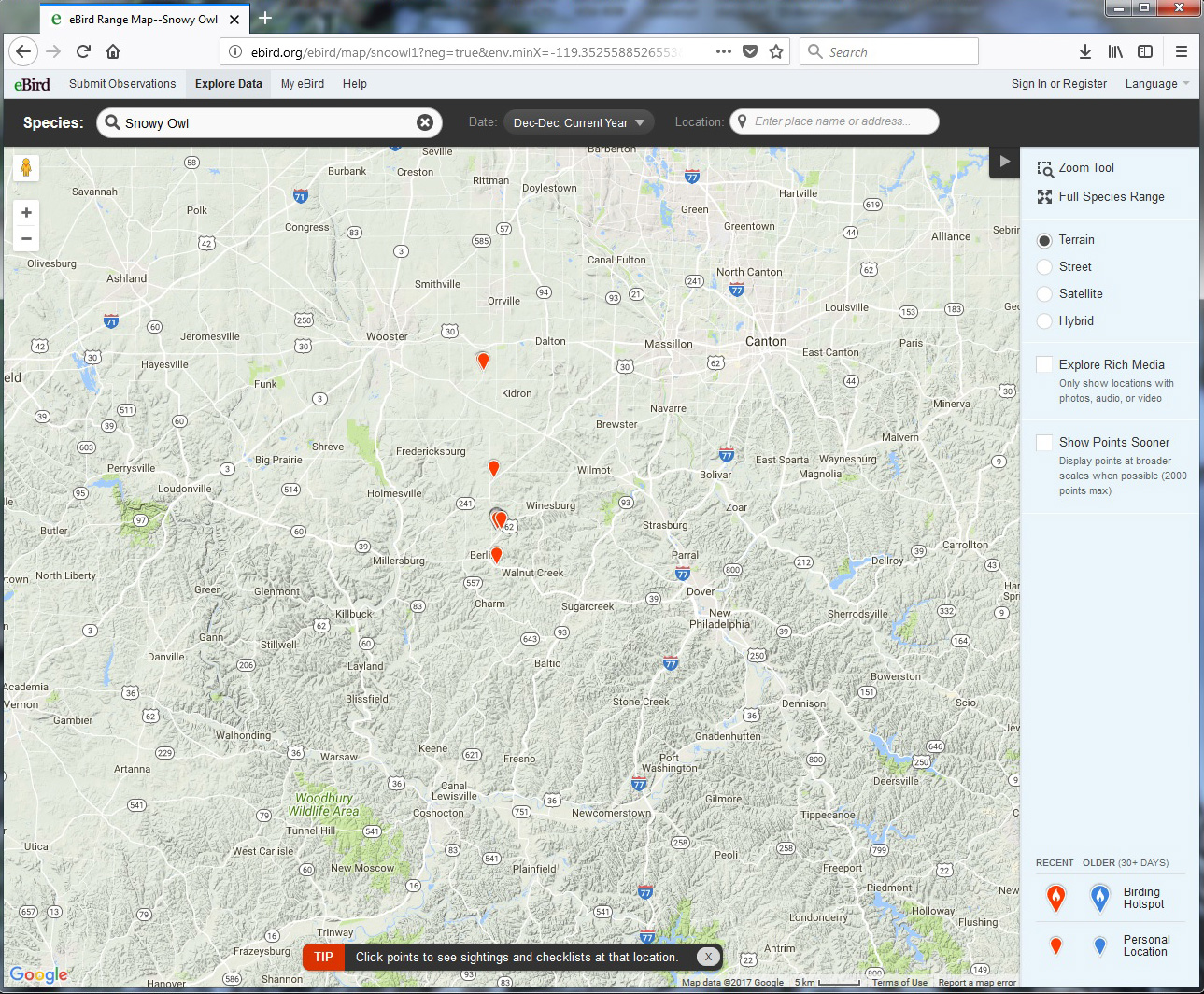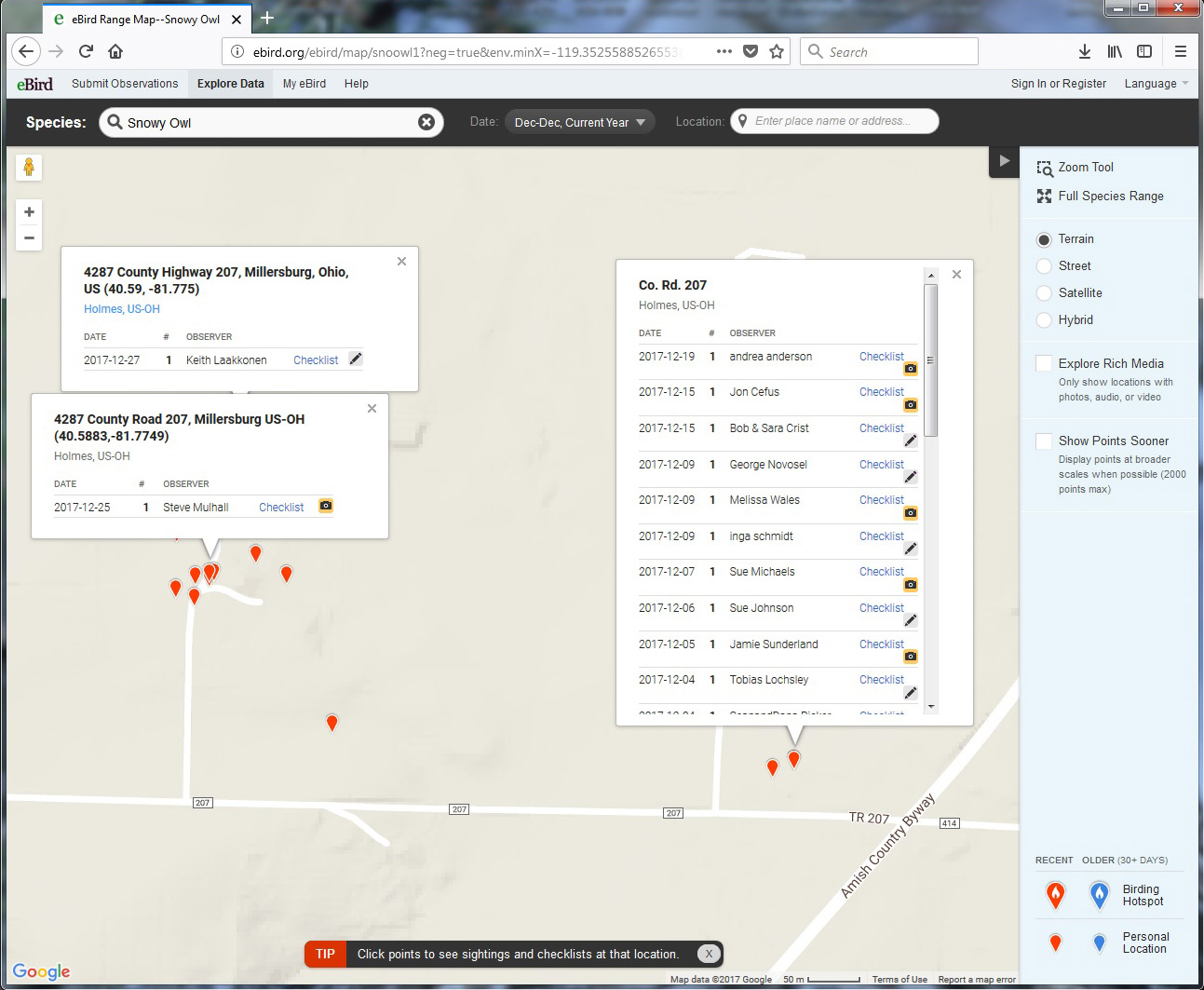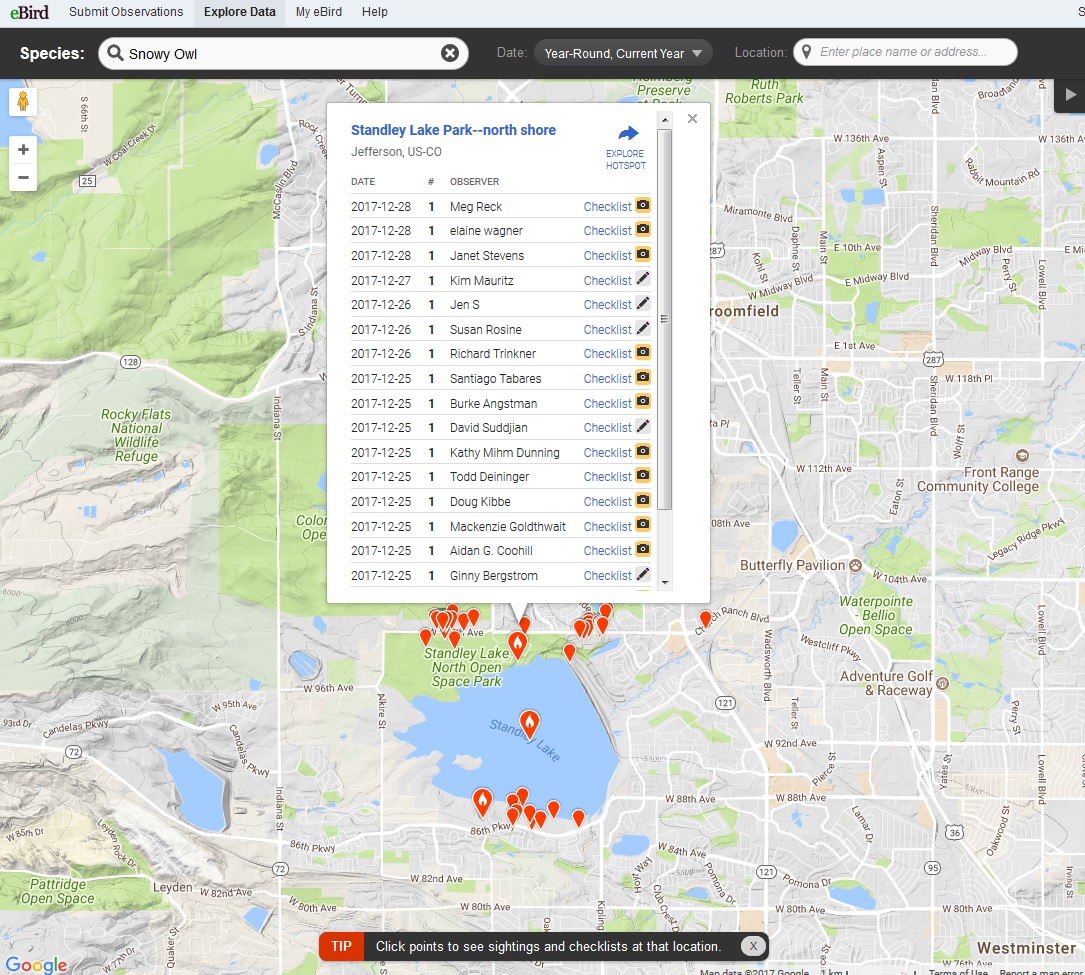Good news! The recent really cold weather and new snow cover means snowy owls have moved farther south across the United States. This is just what you need if you want to photograph these magnificent creatures. They move farther south as the temperature drops and go back north as the temperature rises.
For a larger version of all of the screen captures in this article, click on the image.
To find snowy owls that are closest to your location, go to the interactive map of Snowy Owl sightings. I will take you through one example to show you how best to use this map. These are screen captures in this article so they are not interactive.
The first thing you should do is use the drop down menu to change the dates to the current month and year. In this case I changed the date range to “Dec to Dec” and chose “Current Year” because I only want to see sightings for December 2017. Then click “Set Date Range”.
If you are heading out after January 1, 2018, choose “Dec to Feb” and “Current Year” and it will show you Dec 2017 through however far we are in 2018. If you are heading out later in January choose “Jan to Jan” and “Current Year”. Sightings more than two weeks old aren’t going to be of much help.
Next pick a destination with a lot of dark purple that is closest to your location. As you pick a state on the map the more purple there is and the darker the purple the better. That means more snowy owl sightings.
Unfortunately, if you live in the southern United States you are still going to have a long drive, but at least it will be one day shorter than if you went looking for snowy owls a couple of weeks ago. Thanks to the cold weather the snowy owls have moved about a day’s drive farther south.
I live in Ohio and I usually have to drive to Michigan to see snowy owls. But right now it is cold enough that they are in Ohio so I will use Ohio as an example as to how to use this map.
Use your mouse to grab a purple area you are interested in and drag it to the center of the map. Then zoom in using the plus symbol (+) at the upper left corner of the map. I live in Ohio and there happens to be a lot of dark purple in the northeast part of the state. Take note of the dark purple area in the center of this map (immediately above) just southeast of Wooster. We are going to take a closer look at that area.
When you zoom in close enough on a purple area, the purple rectangle is replaced by red pins. Each red pin is a location where a snowy owl has been sighted. In the map above note the cluster of pins west of Winesburg Ohio (the same town for which a great American novel is named). We are going to zoom in on that cluster of red pins.
As you can see, there have been a lot of sightings west of Winesburg Ohio, all of them just north of highway 207 and west of US 62 (Amish Country Byway). On the interactive map at eBird, click on a red pin to see a list of sightings at that location (one or more), along with the date/s and the person/s who listed the sighting. You are looking for locations that have had sightings in the last two or three days. I clicked on three of the red pins so you could see the listings. The two locations I picked on the left have had sightings in the last few days. That is what you want.
The pin on the right has sightings that are all over a week old. That owl has moved on. Older sightings are only helpful if there is a long list over a long period of time. That tells you a snowy owl likes that area and might come back. I would check the road on the left first and then the one on the right. All of these sightings could be due to just one or two snowy owls hunting in this area. If you check out a cluster of red pins and all of the sightings are more than a few days old, that owl has probably moved on to a new location. Zoom back out on the map and pick another dark purple area to zoom in on.
I found several other areas in northern Ohio that have snowy owl sightings over the last 2 or 3 days.
Your goal before you head out on a snowy owl photography expedition is to find several different areas with sightings in the last two or three days. When you arrive, go from one area to the next until you find a snowy owl.
There is a reason for picking multiple areas. On a Saturday night before my first snowy owl expedition I found several different areas in the state of Michigan that had snowy owl sightings on both Friday and Saturday. That was encouraging. I left Sunday morning and spent several hours Sunday afternoon searching all of those Michigan locations but only one of those areas had a snowy owl. They are wild, unpredictable creatures and they move around. A snowy owl can hunt one area within a one or two mile mile radius for several days, and then move on to an entirely different area. Sunday night in Michigan I went online in my motel room and checked out locations for the next day.
One more short example. I have several photographer friends in the Denver Colorado area. I zoomed in on a dark purple area northwest of Denver and found this cluster of recent sightings. If I was in Colorado or headed for Colorado this weekend, this is one area that would be on my list of areas to check out.
There is a more to tracking down snowy owls than I cover in this update. More detailed information on finding and photographing snow owls is in my Snowy Owl Series.
eBird Link
Snowy Owl sighting map at eBird.org
The Snowy Owl Series
“How To†Series: Snowy Owl Photography – An Overview
How to Find and Photograph Snow Owls
Snowy Owl Photography: Control the Background for Better Images
Snowy Owl Photography: Solving A Photo Problem (And the Right Way to Exit Your Vehicle)

